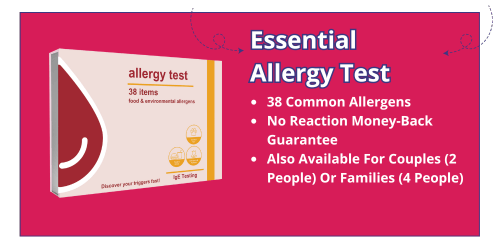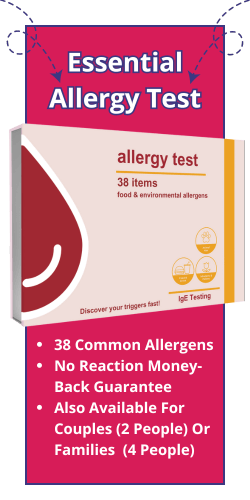Dairy and lactose sound like the same thing, right? After all, one is in the other, so they must be the same problem as far as the body is concerned. The reality is that dairy and lactose are unique from each other, especially in how the body responds each. Depending on your symptoms, you’ll either want to consider a dairy allergy test or a lactose intolerance test. These tests will help you have a much better idea of what’s going on in your body and what you need to change to make it feel better.
A dairy allergy test vs a lactose intolerance test
The main difference between these tests is taking a look at what they are testing for as well as the reaction that they are testing for. A dairy allergy test implies that you have an allergy to dairy products. It could be mild, moderate or severe. Common symptoms of dairy allergy include a skin rash, swelling of the lips, extreme stomach discomfort and diarrhea. An allergic reaction occurs when the body seems dairy as a threat and starts off a reaction to destroy the ingredients. These reactions occur within minutes after eating. An allergy test will require either a blood sample or a skin prick test to determine the results.
A lactose intolerance test, on the other hand, is when the body is lacking in the digestive enzyme that it requires to break down and digest lactose ingredients. When you eat these products, the stomach and digestive tract have to work much harder in order to break down the active ingredients and you can experience symptoms such as flatulence and nausea. You may also have varying degrees of stomach pain and even diarrhea. The test can be done through hair samples, blood samples and elimination diet and food logging. These kinds of reactions can happen 30 minutes to several hours after eating lactose products.
The confusion often lies in the fact that lactose is in dairy products, so any kind of reaction must be lactose intolerance. Most people switch to lactose-free products or even alternatives such as almond milk. If you are allergic to dairy, almond milk would be recommended. If you are simply lactose intolerant, going with lactose-free dairy milk would be all you need to do.
The importance of proper testing
A dairy allergy test and a lactose intolerance test are different in how they are conducted as well as how they work because these is a significant difference to the reactions and their potential severity. An allergy could be severe or life-threatening with no warning even if you have only a small amount of dairy products. An intolerance, while uncomfortable, does not hold the same danger and can be monitored by addressing how much lactose you’re eating or drinking in one sitting.
Discovering which of these conditions you have is easy, convenient and important to your overall health. Start with a dairy allergy test and see what it tells you. If you are negative on the allergies, try a lactose intolerance test instead. The more you know, the bette you’ll feel.







